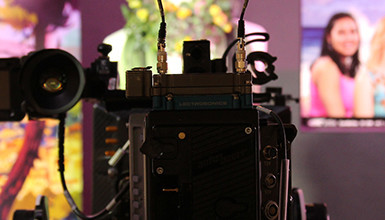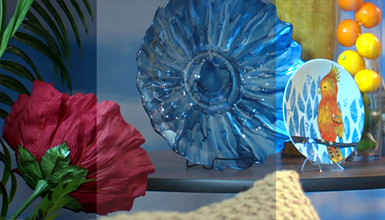Technical Standards
Tutorials & Guides
Recently I have been getting a number of questions about Log mode in the Canon C300, which is great because that means that many of us are using this mode. However, there are some really important things to know before jumping in. Canon has recently published a white paper on Canon Log that is full of great info. It's not exactly light reading, however, so I'll try to outline some of the important information about Canon's Log curve in this blog.
Tutorials & Guides
Being able to read a waveform monitor is one of the most valuable skills you can posses, both on set and in post. The waveform is the most precise way to check for exposure and, to a certain extent, color accuracy.
Tutorials & Guides
At AbelCine, we offer a class on video formats that covers a variety of different terms and compression formats. One of the more common questions I'm asked is, "What's the difference between uncompressed video, Raw, and Log recording?" With so many cameras these days offering different recording options, combined with the popularity of external recorders, it's no wonder there are a lot of questions about this topic.
Tutorials & Guides
Have you ever wondered how a digital camera actually "sees" color and translates it into information that can be recorded? A Color Matrix describes the balancing of different parts of the color spectrum in order to create an accurate representation for capture. It describes not only the three primary colors, but their relationships to one another. By adjusting the properties of the Color Matrix, you can do things like: shift the white balance of a camera, change the sensitivity, alter the color pallet, adjust for color anomalies in the lens, or flaring on the sensor.
Tutorials & Guides
With more and more cameras shooting in flat-looking Log modes or RAW, the topic of LUTs on set and their implications in post have become big points of discussion. At the same time, there are many cameras that utilize the more traditional Scene Files for control of color and contrast. Furthermore, there are cameras like the ARRI ALEXA and RED EPIC that offer their own unique types of image control. With all these different formats, the difference between LUTs, Looks and Scene Files can be confusing, so in this article I explain the terms and discuss how these files are applied.
Tutorials & Guides
I often get asked about the stuttering video motion, or judder, seen in 24p video. Even though we have all been watching or shooting 24p for years, for many of us it is new to see true 24p (or 23.98p) video displayed on a monitor.
Tech News
It's been another exciting year in our industry, with lots of evolutionary and revolutionary changes. Many of the trends we've seen coming for the past several years came to fruition in 2011, leaving some to wonder what comes next. Let's take a look back and see if it can help inform us a bit on what's to come in 2012.
Tutorials & Guides
ARRI has released their Anamorphic De-squeeze download license for purchase. This eagerly anticipated license for the ALEXA will correct the "squeeze" effect that occurs when shooting with anamorphic lenses. With the license installed, ALEXA and ALEXA Plus cameras with the Software Update Packet (SUP) 4.0 can now readily accept anamorphic lenses with 1.3x or 2x magnification.
Tutorials & Guides
If you've been following my HD Formats series (Video Formats, Bit Depth & Bit Rate), this blog should help clarify a couple more of those words and numbers we see associated with HD video formats.























